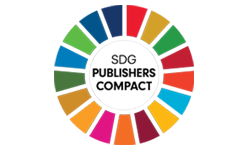A challenge in implementation of Product Lifecycle Management (PLM) tools is the selection of the right vendor and the solution. Implementing PLM entails huge financial investment on the part of the user and hence precise knowledge as to where each tool can be applied is a must. In this paper, seven PLM tool vendors are compared on their definitions of PLM and also their product offerings in different Product Life Cycle (PLC) phases, including the extreme ends of PLC viz. R&D and end-of-life phase, which are usually ignored. An integrated PLC model is developed and the tools are then mapped onto different phases of PLC. Vendors are compared based on number of tools offered in different PLC phases. The results reveal an uneven distribution in the applicability of various tools, with majority of them focusing on the product development phase and an astonishingly low number on the R&D and end-of-life phases.
Abramovici, M. and Sieg, O. (2002) ‘Status and Development Trends of Product Lifecycle Management Systems’, Proceedings of the IPPD conference, Wroclaw, Poland.
Abramovici, M. (2007) ‘Future Trends in Product Lifecycle Management (PLM)’, The Future of Product Development , Part 12, pp. 665-674.
AMR Research, (2007) ‘PLM Market Landscape: Evolving To Enable Value Chain Excellence’.
AMR Research, (2008) ‘The Product Lifecycle Management Market Sizing Report, 2007-2012’.
Aseri, D. (2010) ‘Study on PLM Tools and Vendors’, unpublished thesis, Indian Institute of Science, Bangalore.
Benassi. M., Bordegoni. M., Cugini. U., and Cascini. G. (2006) ‘Selection and Evaluation of PLM Tools for Competitive Product Development’, Advances in Design, Springer Series in Advanced Manufacturing, Part 6, pp. 351-362.
CIMdata, (2002) “Product Lifecycle Management – Empowering the Future of Business”, Technical Report.
Djebbi, O., Salinesi, C. and Fanmuy, G. (2007) ‘Industry Survey of Product Lines Management Tools: Requirements, Qualities and Open Issues”, Proceedings of the 15th IEEE International Requirements Engineering Conference, pp. 301-306.
Foster R.N., (1986) “Innovation, the attacker’s advantage”, New York Summit.
Guerra-Zubiaga, D.A., Rios-Soltero, E.F., Ramón-Raygoza, E.D., Tomovic, M., and Molina, A. (2007) “PLM Tools Taxonomy to Support the Design Process”, Proceedings of the International Conference on Comprehensive Product Realization, Beijing.
Hofer C.W. (1975) “Toward a Contingency Theory of Business Strategy”, The Academy of Management Journal, 18: 4, pp. 784-810.
Kang J. and Brissaud D. (2007) “A Product Lifecycle Costing System with Imprecise End-of-Life Data”, Proceedings of the 14th CIRP Conference on Life Cycle Engineering.
Kovacs G., Kopacsi S., Haidegger G. and Michelini R. (2006) “Ambient Intelligence in Product Life-cycle Management”, Engineering Applications of Artificial Intelligence, 19: 8, pp. 953–965.
Mueller K.G., Court A.W. and Besant C.B. (1999) “Energy life cycle design: a method”, Proceedings of the Institution of Mechanical Engineers, Part B: Journal of Engineering Manufacture, 213:4, pp. 415-419.
Ohri V. (2006) “PLM- Incorporating Customer for Total Product Decision”, Product Lifecycle Management, Proceedings of 3rd International Conference on Product Lifecycle Management, Bangalore, India, 11-13th July .
Saaksvuori A. and Immonen A. (2005) ‘Product Lifecycle Management’, Springer, Heidelberg
Schuh. G., Rozenfeld. H., Assmus. D., Zancul. E. (2008) “Process oriented framework to support PLM implementation”, Computers in Industry, 59, pp. 210-218.
Song B., Li X. and Ng W.K. (2006) “A framework for an Intelligent Design-support System Based on Product Lifecycle Data”, Proceedings of 3rd International Conference on Product Lifecycle Management, Bangalore, India, 11-13th July .
Srinivasan. V. (2008) “An integration framework for product lifecycle management”, Computer Aided Design.
Subrahmanian. E., Rachuri. S., Fenves. S., Foufou. S. and Sriram. R. (2005) “Challeneges in supporting product design and manufacturing in a networked economy: A PLM perspective”, Proceedings of the International Conference on Product Lifecycle Management, pp. 495-506.
Terzi S., Garetti M., Macchi M. (2006)“Methodologies in the Product Lifecycle”, Proceedings of 3rd International Conference on Product Lifecycle Management, Bangalore, India, 11-13th July .
Wognum, N., Trappey, A. (2008) “PLM Challenges”, Advanced Engineering Informatics, 22:4 pp. 419-420.
Yang Q.Z. and Song B. (2006) “Eco-Design for Product Lifecycle Sustainability”, Proceedings of the IEEE International Conference on Industrial Informatics, Aug 16-18, Singapore, pp.548-553.
Zwolinski P. and Brissaud D. (2006) “Designing products that are never discarded”, Innovation in Lifecycle Engineering and Sustainable Development, 3, pp. 225-244.


